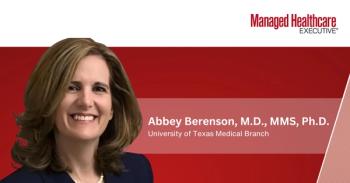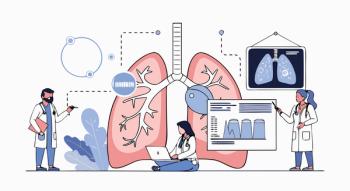
Drug Topics Journal
- Drug Topics March 2018
- Volume 162
- Issue 3
Scammers, Fraudsters Capitalize on Opioid Addiction Treatment
A lack of national standards and less than optimal oversight of many inpatient, opioid addiction rehabilitation programs is raising questions about the level of services, personnel, and quality of care many patients are receiving.
A lack of national standards and less than optimal oversight of many inpatient, opioid addiction rehabilitation programs is raising questions about the level of services, personnel, and quality of care many patients are receiving. On the other end of the spectrum, however, are programs dedicated to guiding patients on the road to recovery.
The
(SAMHSA) finds, however, that as many as 90% of people who most need drug rehab do not receive it.
Treatment approaches run the gamut from abstinence, detox, and 12-step programs, to comprehensive programs embracing a combination of group and individual psychological therapy, medication-assisted treatment (MAT), treating co-occurring conditions, and social services. The variety of programs and discrepancies in quality not only breeds skeptics of the addiction rehab industry, but also opens the door for scammers.
Where is the money going?
Private insurers are spending millions on opioid addiction treatment-up 1,000% between 2010 and 2015 to $721 million, according to Fair Health-prompted by President George W. Bush’s 2008 parity law requiring most group health plans to provide more generous coverage for treatment of mental illnesses. The 2010 ACA cemented coverage even further.
Coker Ross
Today, there are more than 14,000 specialty addiction treatment programs in the United States, according to SAMHSA’s
“What programs are offered is pretty much up to a rehab facility,” says Carolyn Coker Ross, MD, author, speaker, and consultant in the treatment of addictions, eating disorders, and obesity in La Jolla, California. “While there are some governing organizations ([the Joint Commission] and CARF), they do not dictate what is offered. And the level of treatment providers varies immensely.”
“Often times, poor rehab programs offer nice amenities in a scenic location, but lack the appropriate clinical care,” says Lisa Blanchard, vice president, clinical services, Spectrum Health Systems, which provides addiction treatment services, including
“Conversely, good programs have a clear clinical vision and are accommodating, hold clients accountable to expectations, are friendly and inviting with strong customer service, and have strong values and commitment to each client’s recovery,” she says. “The staff should be knowledgeable, well-educated, and compassionate. Good programs also have strong aftercare and family engagement components, as both of these are vital to sustaining recovery.”
Blanchard says that facilities newer to the market are usually backed by venture capitalists looking to make a financial boom in lieu of providing appropriate care. “Nationally, there has been an increase of these ‘destination facilities,’ usually in Florida or California but could be found anywhere,” she says.
Ventrell
Marvin Ventrell, executor director of the National Association of Addiction Treatment Providers, agrees with Blanchard. “Because of industry growth and an increased ability to profit, private investors are putting money into new centers or buying them. They are in it for the ROI, which doesn’t usually equate with quality care.”
Until recently, says Scott Olson, CEO, Pathway Healthcare, there were really only two kinds of treatment for opioid addiction: methodone clinics, mostly for those on Medicaid; and residential programs, inpatient rehab clinics often for the very wealthy. Headquartered in Dallas, Pathway provides addiction treatment and recovery clinics. They combine MAT, using buprenorphine and naloxone, along with behavioral therapy.
What bothers Olson is a philosophy deployed by some rehab centers-recovering or ex-addicts helping patients, which makes no sense to him. “If a person’s life is in chaos, how can he or she help someone else?” he asks. “We can’t afford to promote poor care.”
Caron Treatment Centers, based in Wernersville, Pennsylvania, offers a multidisciplinary approach to address the co-occurring disorders often associated with substance use. It incorporates various treatment modalities, such as cognitive behavioral therapy (CBT) and dialectical behavioral therapy (DBT), psychological testing, medical evaluations, and 12-step integration.
Tieman
Doug Tieman, president/CEO, says Caron endorses the utilization of MAT-primarily Vivitrol (naltrexone extended release) or Suboxone (buprenorphine and naloxone)-but not methadone, and stresses that MAT alone is not a panacea.
Narcan (naloxone) rounds out the list of other available medications under MAT for opioid addiction.
“Medication must be used as a supportive tool and managed by a qualified healthcare professional in collaboration with treatment specialists as part of a comprehensive therapeutic program,” Tieman says. “We identify patients for whom we think MAT will be a good fit and educate all patients about the disease concept of addiction and the importance of implementing evidence-based practices to sustain a meaningful and healthy recovery.”
‘Rampant’ corruption
Milking the system seems rampant with no national standards and few binding ones from states to oversee lengths of stay, kinds and costs of treatment, providers and effectiveness, and safety of programs. As noted, only two bodies-CARF (Commission on Accreditation of Rehabilitation Facilities) and the Joint Commission offer voluntary accreditation.
“In certain parts of the country, there is rampant corruption because of the potential for making large sums of money which draws in criminals and other non-licensed people to run these centers,” Coker Ross says. “Quality of care is hugely variable. The sad part is the parents are desperate to get help for their loved ones. They have no way of knowing which treatment facilities are legitimate and which are scams.”
She is concerned that CARF and the Joint Commission are too lax.
“Drug addiction is a politically handicapped problem without a national push that requires money,” she says.
“The substance abuse area is a field that has become a ripe market in the past 10 years for profiteers and charlatans,” Tieman says. “It’s disgraceful to take advantage of a national tragedy, preying on those who need help.
National standards are missing because the addiction problem is only a tiny fraction of the healthcare dollar, he says, adding that most facilities are small and “pull little weight.” There also is still a stigma attached to mental health problems, he adds.
“This is gaming the system,” Tieman says, referring to increasing costs for insurers and profits for treatment centers. “It’s unethical and unacceptable for centers to maximize insurance billing at the expense of doing the right thing for patient clinically.”
Blanchard uncovers another inherent problem in the industry-unscrupulous facilities that access potential clients through social media (Google, Facebook, late-night TV ads).
“The industry has gotten a black eye because business practices and marketing have been deceptive to customers,” Ventrell says. “Providers are pretending to be advocates, preying on sufferers by telling them an expert can help without any legitimate evaluation. It’s about the profit motive.”
The National Association of Addiction Treatment Providers has put its foot down in achieving improvement in the system. Last December, it revised its 2012 Code of Ethics mandating that NAATP members adhere to ethical marketing and billing practices outlined in its Quality Control Initiative, including patient brokering, leads buying and selling, insurance billing abuse, deceptive call aggregation and services misrepresentation, as a condition of membership.
Unique challenges
The Office of National Drug Control Policy says that many factors contribute to efficacy of treatment programs: reduced drug use and improvements in physical and mental health, education, relationships, and employment.
Olson says that if opioid addiction is considered a chronic disease, it needs lifetime management, making it difficult to find a metric for success. “You also have to look at emotional issues behind addiction-those that affect abuse and relapse,” he says.
Although there haven’t been a lot of statistics on the success of rehab addiction treatment programs, the Surgeon General’s Report outlines the following as key aspects to success:
- Reduction of key symptoms (for example, substance use) to non-problematic levels.
- Improvement in general health and function.
- Training the patient and family to recognize and self-manage potential precipitants of future relapse.
Tieman cites some specific improvements-verified by the University of Pennsylvania-at Caron Treatment Centers via its My First Year Recovery Program, which costs Caron $8,000 per patient:
- 76.4% of participants were abstinent at completion of the one-year program;
- 93% reported that their quality of life was good to very good at the completion of the program;
- 81% of those who completed the program continued to attend outpatient addiction treatment throughout the first year and are working on a recovery program;
- 93.7% attended 12-step meetings during the first year; and
- ·86.7% secured a sponsor post program during the 12-month program.
Underutilized solution
To increase the chances of pushing patients toward recovery, rehab centers are slowly adopting MAT. On October 17, 2000, Congress passed the Drug Addiction Treatment Act (DATA) that permits qualified physicians to treat narcotic dependence with schedules III-V narcotic controlled substances that have been approved by the FDA for that indication.
Revised Federal Guidelines for Opioid Treatment Programs (OTPs), published by SAMHSA in 2015, prescribe regulations for providing MAT to patients.
OTPs are required to have current valid accreditation status, SAMHSA certification. and Drug Enforcement Administration registration, before they are able to administer or dispense opioid drugs for opioid addiction treatment.
These regulations apply to opioid agonist treatment medications that are FDA-approved, including methadone and pharmaceutical products containing buprenorphine. Compliance with the regulations is assessed by SAMHSA-approved and monitored accrediting organizations, such as CARF International, The Joint Commission, and the National Commission on Correctional Health Care.
Despite legislation, fewer than half of drug rehab programs utilize a MAT program for addiction treatment. Even with half of privately funded addiction treatment centers offering a MAT program, only around one-third of clients are getting this type of drug addiction treatment, according to
Upping the game
Gary Mendell, CEO/founder of New York City-based Shatterproof, an organization dedicated to helping end addiction and substance abuse, has developed National Principles of Care for quality addiction treatment with approval from 16 insurers. His eight principles are based on the Surgeon General’s Report and also are consistent with the National Institute on Drug Abuse’s Principles on Drug Addiction Treatment:
Routine screenings at every medical setting.
Personal plan for every patient.
- Fast access to treatment.
- Disease management rather than 28 days.
- Coordinated care for every illness.
- Behavioral healthcare from legitimate providers.
- Medication-assisted treatment.
- Support for recovery outside a doctor’s office.
Mendell also is in the process of building a scorecard with ratings to determine which providers are in line with the principles, helping insurers decide whom to include in their networks, and helping consumers choose the best providers.
Mari Edlin, a frequent contributor to Managed Healthcare Executive, is based in Sonoma, California.
Newsletter
Get the latest industry news, event updates, and more from Managed healthcare Executive.



















































